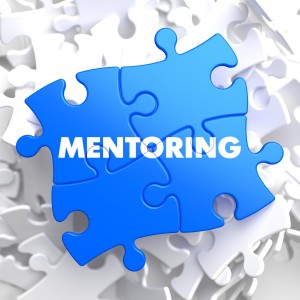 If you are the director or supervisor of a program, undoubtedly you have had to address numerous performance issues. This post continues the previous topic, Giving Feedback. As you navigate one of the most stressful parts of a supervisor’s job, I hope it will be helpful to you. To set the stage for giving feedback, if you haven’t already done so, I recommend you read the post just before this one.
If you are the director or supervisor of a program, undoubtedly you have had to address numerous performance issues. This post continues the previous topic, Giving Feedback. As you navigate one of the most stressful parts of a supervisor’s job, I hope it will be helpful to you. To set the stage for giving feedback, if you haven’t already done so, I recommend you read the post just before this one.
After the expectations for your organization have been set and communicated in several ways to the entire team, the rest becomes a pattern of supervision. And this supervision is critical to your organization’s performance.
Everyone in your organization needs to know that someone (director, supervisor) is observing their performance, and will offer feedback in a timely fashion. Most of the observations are informal – for example, as you walk through a classroom and note something (either positive or otherwise). This observation-feedback cycle is simply a part of staff development. To be effective, it must happen frequently. Use feedback regularly to acknowledge real performance. Try to catch and respond to your team doing the job right, as much as you catch and respond to them doing something not quite right. This is how a professional relationship grows and deepens – and how you motivate your teams to bring their best to work each day.
Along the way, I learned that people have a habit of becoming what you encourage them to become – not what you nag them to become. And, they will rise to the challenge if they know that you care about their professional growth.
Feedback then – constructive feedback – is information-specific; issue-focused; and based on observations – your own observations!
Be direct when delivering your feedback. Look into the person’s eyes. Get to the point – avoid beating around the bush. Both positive and negative feedback should be given in a straightforward manner. You are setting the tone for professionalism – and for a pattern of observation and conversation. So, do it the same way each time. Be sincere. Sincerity says that you mean what you say with care and respect. You can be kind, sincere, caring – and direct – all at the same time.
Avoid the phrase “need to.” It implies that something didn’t go well, but it is not clear or exact. Go for clarity and specifics when giving any kind of feedback.
Avoid giving mixed messages. Mixed messages are yes, but messages. “You’ve worked hard, but …” The word but says “don’t believe a thing I said before the but.” This style of giving feedback creates contradiction and definitely a mixed message. People leave the meeting not knowing where you, or they, stand – and the process fails.
Try these instead. “You’ve worked hard. You’ve written the first preschool newsletter, you’ve had three events for parents – and all three were successful; you’ve completed all of your progress reports, and had conferences with every family in your classroom – well before the deadline date! I appreciate your efforts, and applaud the successful outcomes!”
Or this, “I want to talk with you about the lateness of your progress reports. I’m concerned about your performance in this area and I want to give you an opportunity to discuss ‘why’ with me.”
Clearly, there are no mixed messages here. There are, however, clear, specific introductions to two conversations about performance – one positive, and one not.
Positive feedback is news or input about an effort well done. In positive feedback situations, express appreciation with specifics.
Negative feedback is news about an effort that needs improvement. Negative doesn’t mean terrible, but rather performance that should be better. In negative feedback situations, express concern. A tone of concern communicates a sense of importance and care – it provides the appropriate level of sincerity to the message. The purpose of negative feedback is to create awareness that can lead to correction or improvement in performance. If you can’t give negative feedback in a helpful manner, you defeat its purpose.
Tones of anger, sarcasm, or frustration tend to color the language of the message, and turn attempts at negative feedback into criticism. The content of the message gets lost in the noise and harshness. The flip side of this is also true. Apologizing, uncertainty on your end, an indirect approach, beating around the bush – and worst of all, hugging or touching if the person becomes emotional – also causes the message to be lost.
So, now that you are aware of some of the potential pitfalls and some of the successful techniques, start practicing. If you have a tried-and-true strategy for addressing concerns, continue to use it! But, if you are the person who would rather let things go, and hope for the best – instead of confronting a performance issue – then begin with small steps and try it this way.
Once you begin to address concerns in a timely fashion; once you have a template for shaping your words and conversations; and, once you meet with satisfaction and turn a performance issue around by giving feedback, you will be empowered. It gets easier each time you do it. You still have to prepare, but your delivery becomes more confident, and the results more successful.
Stay tuned for the final Giving Feedback … (Part Three), in February.






